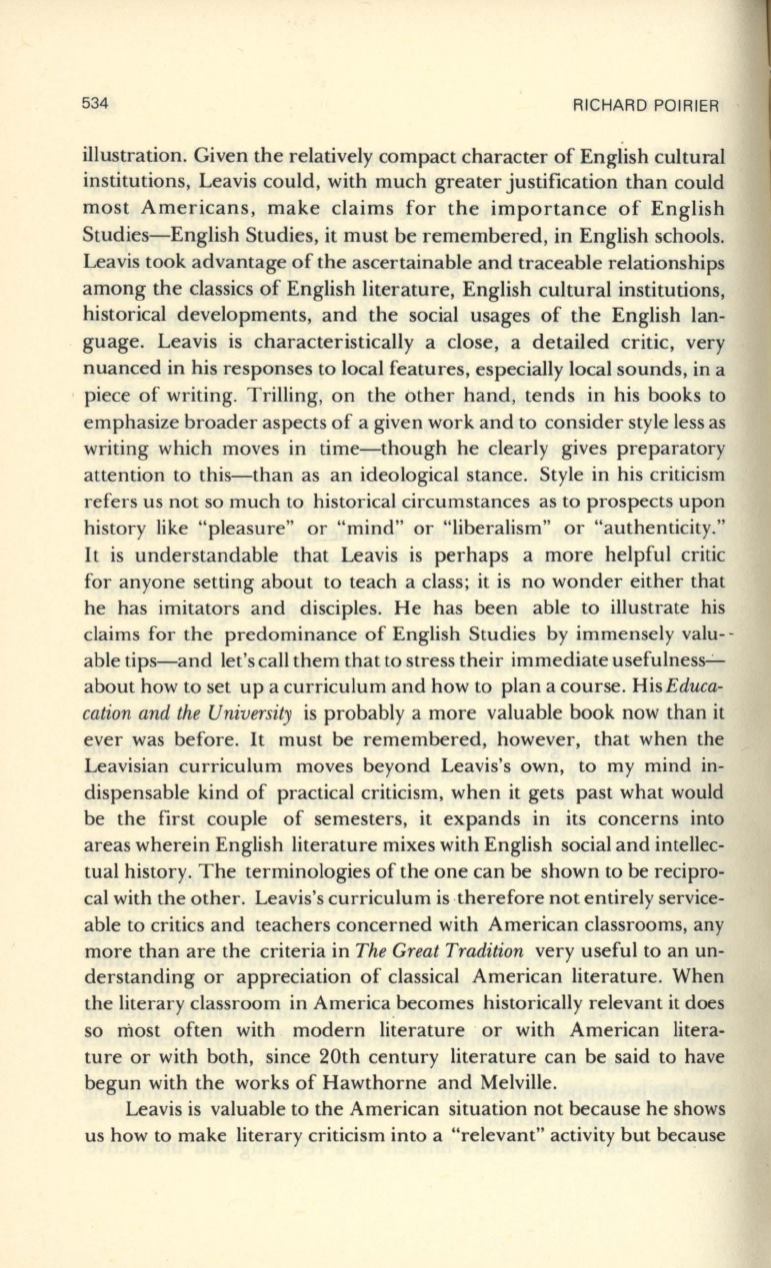
534
RICHARD POIRIER
illustration. Given the relatively compact character of Engiish cultural
institutions, Leavis could, with much greater justification than could
most Americans, make claims for the importance of English
Studies-English Studies, it must be remembered, in English schools.
Leavis took advantage of the ascertainable and traceable relationships
among the classics of English literature, English cultural institutions,
historical developments, and the social usages of the English lan–
guage. Leavis is characteristically a close, a detailed critic, very
nuanced in his responses to local features, especially local sounds, in a
piece of writing. Trilling, on the other hand, tends in his books to
emphasize broader aspects of a given work and to consider style less as
writing which moves in time-though he clearly gives preparatory
attention to this-than as an ideological stance. Style in his criticism
refers us not so much to historical circumstances as to prospects upon
history like "pleasure" or "mind" or "liberalism" or "authenticity."
It is understandable that Leavis is perhaps a more helpful critic
for anyone setting about to teach a class; it is no wonder either that
he has imitators and disciples. He has been able to illustrate his
claims for the predominance of English Studies by immensely valu-–
able tips-and let's call them that to stress their immediate usefulness...:.–
about how to set up a curriculum and how to plan a course.
HisEduca–
cation and the University
is probably a more valuable book now than it
ever was before.
It
must be remembered, however, that when the
Leavisian curriculum moves beyond Leavis's own, to my mind in–
dispensable kind of practical criticism, when it gets past what would
be the first couple of semesters, it expands in its concerns into
areas wherein English literature mixes with English social and intellec–
tual history. The terminologies of the one can be shown to be recipro–
cal with the other. Leavis's curriculum is ·therefore not entirely service–
able to critics and teachers concerned with American classrooms, any
more than are the criteria in
The Great Tradition
very useful to an un–
derstanding or appreciation of classical American literature. When
the literary classroom in America becomes historically relevant it does
so most often with modern literature or with American litera–
ture or with both, since 20th century literature can be said to have
begun with the works of Hawthorne and Melville.
Leavis is valuable to the American situation not because he shows
us how to make literary criticism into a "relevant" activity but because


